Erasmus+ Journal (Issue 2) 2013/14
Daniela Mohr, Julia Neumeister, Sweden, Örebro University, Mobility for Studies
Autorinnen/Autoren: Daniela Mohr & Julia Neumeister
Peer-Review: Gertrude Neumeister
Overview, History
The preparation for the Örebro University was in compare to other universities very good and without problems. All important information for the application, the life in Sweden, selectable courses, credits etc. are on the Örebro homepage for exchange students. (Http://www.oru.se/English/Education/Exchange-Students/)
We arrived on 19th January 2014 and we were immediately received well and friendly. On the arrival Day (January 19) we got a lot of informations, what will happen in the orientation week, rate for the accommodation and so on. You get also your key for the room, the University identification card, a Swedish mobile phone number and a bus card with 50 crowns credit.
On the next day we got to know our Fadders. The Fadders are other exchange students or Swedish students. The fadders took care about the new exchange students and helped them.
After the arrival day the orientation program started. The orientation program, which took place in the first two weeks, was very well organized, was funny and you could quickly get to know new international contacts. At the beginning it was divided into Faddergroups. These groups were mixed internationally.
Örebro is situated in the middle of Sweden. The city is 200 km west of Stockholm, 300 km east of Oslo and north-east of Gothenburg, and is the ideal base for travelling in different directions. With approximately 135,000 inhabitants (16,000 are students) is Örebro the seventh largest city in Sweden. The landmark of the city is the Castle (Örebro Slottet). It is located on a small river island in the middle of the city. Also the open air museum Wadköping, with the oldest Örebro red wooden houses, is worth to see. From the water tower (Svampen) you have a wonderful view over whole Örebro.
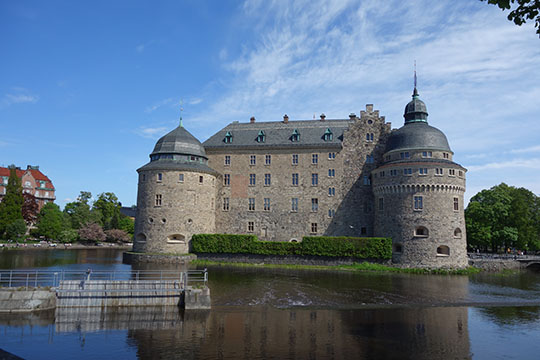
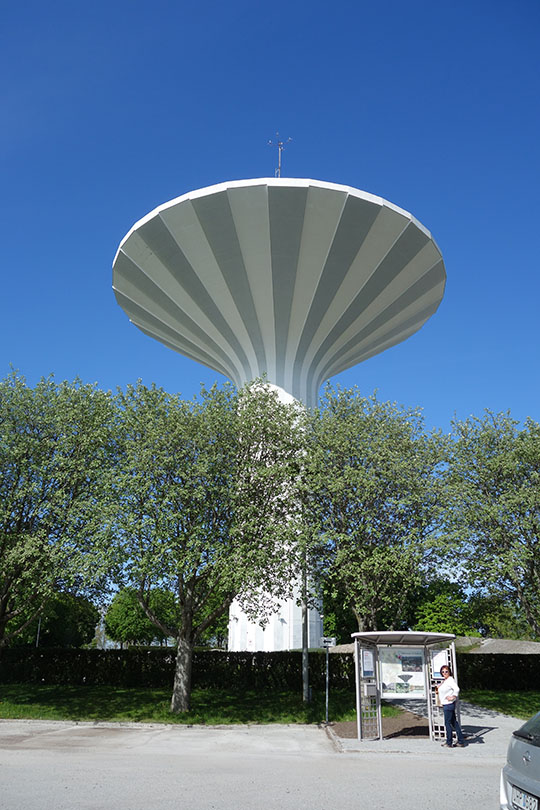
Svampen (Photo:Mohr Daniela)
The city center is small but there are many cafes, bars, several shops, two cinemas and Clubs. You can find there everything you need. An opportunity for cheap shopping is Willy's in the city and also near the university.
Hjälmaren, the fourth largest lake in Sweden, is only 30 minutes by foot away from the university. It is a very nice place, especially in the spring. You can enjoy the nature, meet friends and you can also have a nice BBQ. An other place where you can enjoy the nature is a forest next to the university.
The bus connections between the university and the city center are very good.
The University of Örebro is a very young and modern university. The university is just 15 years old. On campus there are different "houses" for example; Forumhuset or Prismahuset. There you do not only attend courses, but the university also offers a lot of possibilities where you can relax or have a "fika". The University has also various sports courts and a well-equipped gym on campus.
Comparison of education systems and study
You can find not many similarities between the Pädagogische Hochschule Steiermark and the Örebro University. Here in Örebro, you have to work a lot in pair work or in a group. In these groups, we usually had to prepare questions or a topic for the next unit. In the unit we only discussed the topic, the teacher didn't explain anything about the content of the topic.
For a course in Örebro you get 7.5 ECTS. You are only two to three times a week at the university. This seems to be very simple at the beginning, but you have to work a lot at home.
We especially love the fact that you have one course in one month. The theme of the course is studied in that month very intensively. After this month the course is completed and you can concentrate on a new course.
A major difference in compare to Austria is that you can address your teacher with “you”. In Austria you have to use the formal form to address. Furthermore, the teachers really try to learn all the names of the students within a short period of time.
The compulsory attendence here is almost identical handled as in Austria. You have to present in workshops but not in lectures. If you are not at the workshop, you have to do an additional task.
Courses
Swedish Language and Culture I" - 7.5 ECTS
Aims:
-
knowledge and understanding
-
a basic knowledge of swedish grammar
-
a basic knowledge of swedish history, customs and traditions
-
pronounce the individual phonemes of swedish and read a simple text with intelligible pronounciation
-
introduce and talk about himself/herself
-
talk about everyday matters and personal interests
-
express herself/himself intelligibly in certain everyday situations
-
express herself/himself in writing in simple swedish
This course has taken place once a week at the university.
Examination:
-
Written Communication Skills, 3.5 Credits
(seven written exams)
-
Oral Communication Skills, 4 Credits
(one oral exam)
The teacher can be seen as knowledgeable and helpful with any questions and the like. The assessment was taken not so strict. We got a lot of impressions in the Swedish culture, which was very interesting. But we also learned some grammar chapter.
Conclusion: Somewhat earned ECTS and a course that was fun for those who want to learn another language!
Swedish Language and Culture II - 7.5 ECTS
Aims:
-
knowledge about the swedish welfare state
-
describe her/his own background
-
discuss topics relevant to the course
-
express her/his opinions and support her/his arguments
This course is a continuation to "Swedish Language and Culture I", dealing mainly based on text work in the sense of understanding, listening, reading and writing, and on the approach of bringing Swedish traditions and customs. The grammar has been neglected something in this second course because we already developed very much in the first course. The course was once a week.
Examination:
-
Written Communication Skills, 3.5 Credits
(seven written exams)
-
Oral Communication Skills, 4 Credits
(one oral exam)
The test procedure and assessment was again the same as in the first course.
Conclusion: For those who had fun on the Swedish Course I, this course offers fantastic!
Education, Teaching and Learning, a Comparative Perspective – 7.5 ECTS
Aims:
-
important problem areas within teaching and learning, viewed from an international perspective,
-
different theories on teaching and learning in different social, cultural and historical contexts,
-
central questions within educational philosophy
-
critically reflect on and discuss the usage of fiction in the process of teaching and learning in different cultural and social contexts, and
-
analyse the correlation between theories of teaching and learning, and the possibillities and challenges facing education
-
evaluate different theories of teaching and learning against the backdrop of shifting social and cultural contexts, and
-
evaluate the role of fiction in processes of teaching and learning
This course took place twice a week. The course consists of lectures, seminars, work-shops, web-based discussions and school practice. Seminars, workshops, web-based discussions and school practice are mandatory. The course was very comprehensive and interesting but it was something to do for it. After each course we had to write a journal or a summary report. That was tedious. The lecturers were very way to help us to present this course well. They were extremely friendly and helpful.
The school practice was included in this course. Everybody was at a different school. We had to spend in our practice school five days. We thought that was very good.
Examination:
-
Examination 1, 3 Credits
(one oral presentation, the journals and short texts)
-
Examination 2, 4.5 Credits
(Take-home exam)
Conclusion: It is a very useful course and it is good to visit it!
Sport Science, Outdoor Education and Recreation – 7.5 ECTS
Aims:
-
discuss the signifiance of knowledge in action
-
discuss the concepts of adventure, challenge and saftey related to outdoor recreation
-
discuss the consequences of different leadership in the outdoors
-
plan and implement an arrangement in the open air for a group of students
-
apply outdoor recreation both as a method and a value in itself
-
show some different techniques concerning outdoor activities
-
practice outdoor activities both on snow and bare ground
-
discuss, compare and evaluate different types of outdoor recreation
This course was the best we had. The course was held twice a week instead but the advantage was that we made a lot of trips. We often went into the forest, were driving five days ski, climb and ride were completed. It was a really interesting course and we are both of the opinion, to have learned in this course, the most. The teacher was excellent and he knows very well in the nature. The next positive thing about this course was that we spent most of our time in the fresh air. We also had a day with children, which was really nice. We went with them into the forest grilled hot dogs and played games. Was a great experience.
Examination:
-
Practical Moments, 4.5 Credits
(Participation in practical exercises, individual practical tasks and group task (a day in the outdoors for children)
- Theoretical Examination, 3 Credits
(individual written report)
Conclusion: The course is excellent and everyone who is interested in nature, should choose this course! (unfortunately only available in the summer term)
login process
1. Online Registration: All necessary personal data must be entered online on the University website. This gives a user name and a password in order to eventually make further changes.
2. Selection of Courses: The document "selection of courses" is fill in the preliminary course selection. However, it should be mentioned that the choice of courses will usually change due to overlap during the first weeks stay. This happens mostly straightforward and suburb in Örebro. The sum of 30 ECTS is still very good and feasible as well beatable.
3. Learning Agreement: This form must be filled up to a certain limit and constitutes the PHST data and the data of Örebro University and also the preliminary course selection.
4. Online Application Form: This is some time before leaving for Sweden released on the website to fill out. Among other things, this included the date of arrival time must be announced and will be sent on the homepage.
5. Final Confirmation: The confirmation is obtained from the Universty in Örebro after the end of the registration period an e-mail with all the relevant data for the semester abroad.
contact information
Kontaktdaten der Universität
Örebro University
SE-701 82 Örebro
Sweden
www.oru.se
Lena Nordström
SE-701 82 Örebro
SwedenLena.Nordstrom@oru.se
+46 (0)19 303832
www.oru.se
accomodation
In Örebro there are three different ways where you can be accommodated.
- Studentgatan (located next to the campus)
- Tybble (approx 5 minute walk from campus)
- Brickebacken (about 15-20 minute walk from campus)
We both were accommodated in Studentgatan, next to the campus. In Studentgatan as well as in Tybble the rooms are equipped with a private bathroom and a toilet. The kitchen was shared with 7 other students. In Brickebacken you live in a kind of living community together with two other students and you have to share the kitchen with them , the bathroom and the toilet. Tybble and Studentgatan are both more expensive accommodations. Brickebacken is the cheapest. In Studentgatan we paid 2924 SEK for accommodation per month.
Both of us were very happy that we could life in Studentgatan and we really liked that place. You could have there a real student life. Restaurants, a Night Club & the University are on the campus. You could also easily vist your friends.
The corridor colleagues are quite different. Some are very sociable, others just wanted to be alone and didn't talk to us.
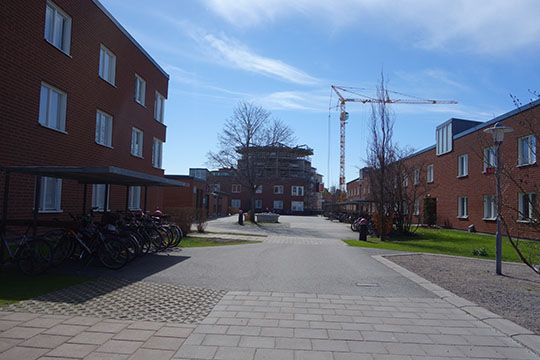
Studentgatan (Photo:Mohr Daniela)
life
We knew that Sweden is not the cheapest country. In the supermarket, the prices are only slightly more expensive as in Austria. But when we looked at the alcohol prices, we could see a serious difference. The Swedish government demands very high taxes on alcohol to keep the alcohol abuse within limits. Hard alcohol can sometimes cost around 25 to 30 euros here. In Austria you can get the same by half price.
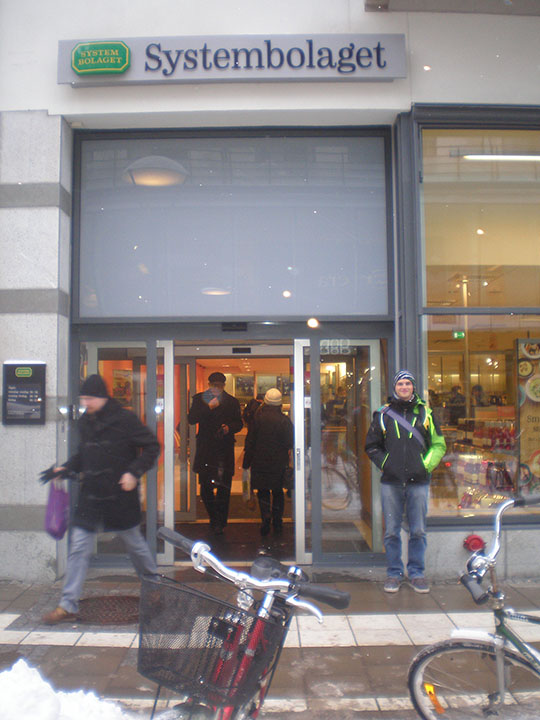
Systembolaget (Photo:Mohr Daniela)
We spent the most money for travelling: Stockholm, Gothenburg, Malmö, Copenhagen, Oslo, Lapland and some other destinations. The Lapland trip was organized by ESN and we can recommend this trip. We collected a lot of new impressions and experience. Especially the northern lights are remained in good memory.
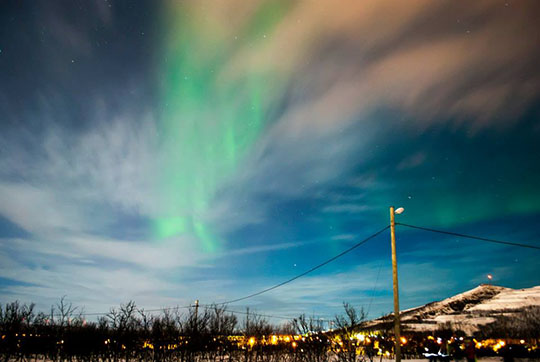
northern lights in Lappland (Photo:Mohr Daniela)
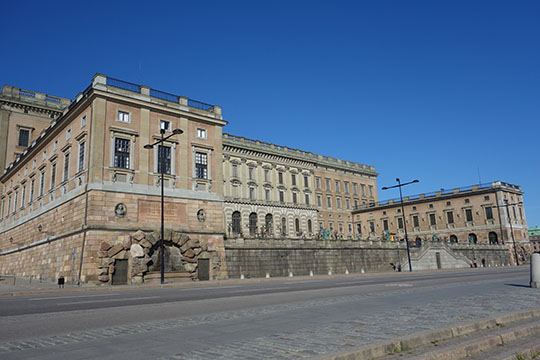
Royal Palace in Stockholm (Photo:Mohr Daniela)
Life in Örebro was very easy. Because everybody speaks English in Sweden and so we had no problems in communication. All Swedes are very friendly. The Swedish fika will be in a good memory. You can describe the Fika as a kind of tea party with a cake (Kanelbullar, Semlar). The longer you're here, the more you have the desire for a Fika. :)
So now the most interesting part: How much money did we spent per month? We needed about 1300 euro/month. Of course, in this sum all travelling is included and we travelled a lot. The monthly stipend of € 360,-- from OEAD covered just the rent for our room, the rest was finance by our savings or our parents. ;)
conclusion
The choice to study for five months in Örebro and Sweden is a good decision. Everything is organized very well. It is observed that the world has much more to offer than what we know and believe. If you have the courage for such a step, you will not regret it. You learn to welcome new things, situations and to be more open to differences and changes.
It doesn't matter which country and what University you choose, we can completly recommend a semester abroad. Beyond the normal advantages such as the improvement of the CV and the English language, the personal experiences are much more important. The experiences you gain and friends you find you will never forget.
"We remain internationally!" :)
Julia und Daniela
Teaching Practice Örebro Spring
Internationella Engelska Skolan
Hagmarksgatan 39
702 16 Örebro
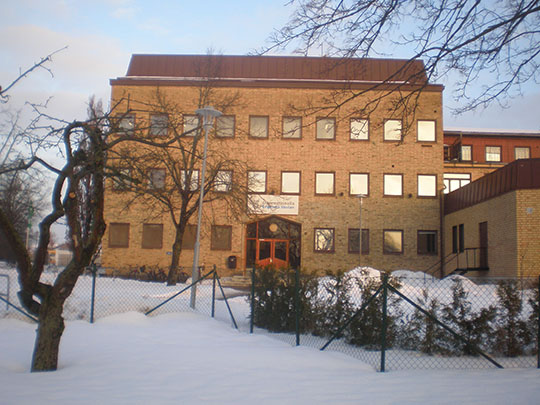
Practice School (Photo:Mohr Daniela)
The school is only 15 minutes by foot away from the university.
Reflecion:
I had my school practice in the Internationella Engelska Skolan. My supervisor, Annika Müller, was very helpful and coordinated sometimes the lessons, when I had my school practice. In this school the teachers are addressed with their surname. My supervisor means that this is very special in this school, because in most of the other schools the teachers are addressed with their first name. In Austria it is normal that the pupils call the teachers with their surname. For example: Ms Mohr.
This school is a private school that means that the state is not the supporter of the school. You can compare it with a company. The school offers the grades between 4 and 9.
Every pupil in this school has an I-Pad. In this I-Pad are saved the most important documents of every subject. You can compare it with our moodle or PH Online. It includes the exercises, the homework and you can also save the panel of the teacher. The I-Pad has also an calendar, where every important date is included. Also the grades have been published on this software. Of course, the students were only able to see their own grades. I was surprised that the children do not only play with the I-Pad, they really work with them for school. I think they know the consequences if they play games. I’m not sure if that would also works in Austria.
My active parts in class were mostly the German lessons in grades 7 to 9, I told a lot of life in Austria. One day I told the pupils something about Austrian food. Unfortunately, the teacher told me that I should tell something about food one hour before the lesson. In that case, I had no PowerPoint to show the students the typical Austrian food with pictures.
In the German lessons the students usually solve some work sheets on their own, because in the following week were THE big exam week. Because of that reason, I went most of the time through the class and observed the students in solving the tasks. Of course I called attantion to mistakes and helped if they had questions. With older students you could already speak good in German and they liked it if they understood me. The younger pupils were usually too shy to talk in German and so I talked with them mostly in Englisch, due to be in touch with them. I was very surprised that most students had no problem with English.
A very special situation stucked in my mind. The students had to solve a listening comprehension. Here in Austria the teacher would turn on the radio and play the exercise twice to three times. In Sweden it was handled completely differently. The students had the exercise already on the I-Pad and each of them could solve the listening individually. I really liked that method.
I also visited several times the Class 5. I spent most hours in the subject "Sience fair". In this subject they worked on a project. The children worked in a group of two or three people and worked on a specific theme. The children could choose a topic in which they are very interested and in which they would like to learn more about it. The requirement was that the topic has to do something with science.
I was very surprised what topic the children chose. For example:
- What happened in the brain when we are sleeping?
- How does the tongue work?
- How does smell affect taste?
- How grow our bones and muscles?
- The voice
I was very impressed about the chosen topics. These children are around 11 years and have these kinds of questions.
They have to include a purpose, a hypothesis, a research, an experiment and a conclusion. They can use the internet and some books to get the information.
For this project they have approximately 2 or 3 week and in the end of the project they have to present their outcomes with a poster. Independent people, that means they are not from the school, judge the poster and the presentation. The best group will win a price.
I visit the class in the end of the project and so I could see all the outcomes of this project. They were amazing. Especially the research and the experiment were very interesting.

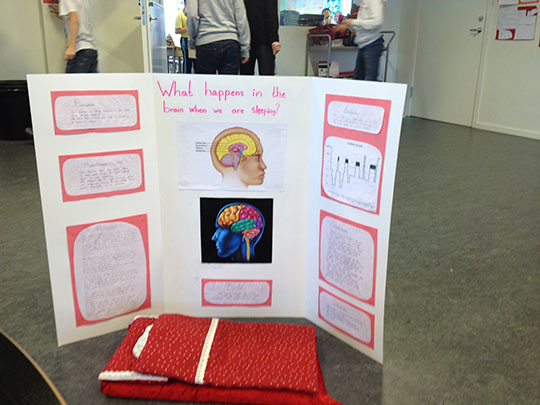
Outcomes of a school project (Photo:Mohr Daniela)
I also visited class 4 in the subject textile handicrafts. The class is divided into two parts. One part had textile handcrafts and the other part had the technical subject. The children were about 10 years old and all of them was able to handle a sewing machine that was very amazing to me. The teacher told exactly what will happened in the lesson at the beginning and then she went through the class and help the children when sewing. During my observation, I found it quite amazing that the children helped each other if they had difficulties and they didn’t went immediately to the teacher.
Comparison of the school practice: Austria - Sweden
There are some differences between Austria and Sweden. One of these differences are for example the class room. As mentioned above, each child has an I-Pad for the lessons. Furthermore the classes were all equipped with a projector and a whiteboard. Unfortunately, you will find in Austria only a few class with such modern facilities.
There is a free hot lunch for each child in this school. You can choose between a vegetarian and a normal menu. Of course, you will find this possibility in Austria too, but I do not think this is for free.
But a most essential difference between Austria and Sweden is the kind of disciplining in the class. Here in Sweden misconduct of a pupil or a student is seen much more relaxed than in Austria.
Situation out of the classroom: The pupils in the classroom tinkered something and one of pupils threw all paper remainder on the floor. The teacher didn’t respond to the misconduct. At the end of the lesson everything had to be cleared away and without saying something the pupil cleared his part of the table.
Of course, I do not know, but I think that teachers in Austria have reacted differently in this situation.
In my outdoor education course, we designed a day with children in the forest. There I could see the attitude of the teachers very well. The students were given a lot of freedom when exploring the forest and the teacher told them no rules. Here I could see very well that the teachers let the children learn from their own experiences and of course errors. I think I don't have the composure to go with children without rules in the forest. I would be too scared that something wrong will happen.
Overview of the lessons:
|
Date |
subject (each 1,5 or 2 hours) |
Klasse |
|
28. January |
German lessons |
Klasse 9 |
|
28. January |
German lessons |
Klasse 7 |
|
30. January |
German lessons |
Klasse 8 |
|
30. January |
German lessons |
Klasse 9 |
|
3. February |
German lessons |
Klasse 7 |
|
3. February |
German lessons |
Klasse 9 |
|
3. February |
science fair |
Klasse 5 |
|
5. February |
science fair |
Klasse 5 |
|
6. February |
textile handicrafts |
Klasse 4a |
|
6. February |
German lessons |
Klasse8 |
|
10. February |
science fair |
Klasse 5 |
|
10. February |
German lessons |
Klasse 7 |
|
10. February |
German lessons |
Klasse 9 |
Daniela Mohr
Fyren EkAlmen
Braxenvägen 5
SE-705 10 Örebro

My school practice took place in the private school Fyren Ekalmen. This school is located a bit outside of Örebro, but is easy to reach by public transport. The first day I was welcomed very nice of my practice teacher (Sabina Segerlund). I was shown the school and the children were introduced to me.
Fyren EkAlmens guides the pupil to find tools and courage to meet and develop the future, through our watchwords SAFETY, RESPONSIBILITY, INNER MOTIVATION and SELFKNOWLEDGE. It was founded in 2012 by four teachers.

The school has an ambition, like the real lighthouse, to lead the path for our pupils.
The teachers want that every student feels safe with adults and peers around them.
They also want that every student feels recognized and respected. Students are welcomed and feel loved. The students also know w

hat they can and can not do.
The school also wants every student shows respect for their peers.
Students are asked to think about their actions and their behavior and maintain their language. All children should find their own motivation and challenge.
Each student will be creative and find solutions and ways and be excited for independent thought and action. You want that every student is proud and believe in yourself.
Students have courage, self-confidence and self-knowledge.
Pupils reflect with adults about what is the next step and how they have to work to achieve it.
Pupils know what you can, what you've learned and how to use their knowledge.
Multiple intelligenses – to let the pupils use different ways of learning
Entrepeneurial learning – to encourage and go through with the pupils ideas
Flexible learning – we focus on the development of learning, instead of time for learning
Leadership – we use a pronounced leadership in the classroom, and encourage pupils to be good models for each other
Dialogue – we continously use the dialogue with each pupil to engourage and talk about how to develop their own knowledge and skills

The concept of this school and how they incorporate the kids in the school, I was very excited. I've never seen anything like it in this way. The children can realize their own ideas in the classroom. The teachers listen to students and use their suggestions and ideas. The pupils make at the beginning of the hour, the question of how they can improve in this subject and how they reach their destination. The children are allowed to work independently, with various methods. Frontal teaching takes place hardly. You may use all documents and thereby may move throughout the school building.
You may use your Ipad or her notebook in any hour. But in these children, there is no playing around on these devices, but they work really very focused on their exercises.
The children are allowed to decide whether to solve a worksheet, doing exercises on the devices or just play games. That was very interesting to watch.
During the breaks, the students always go to fresh air. For them it is very important to be out there and to have movement. They are also in the winter at -10 ° in the schoolyard.
What I found very interesting was that the children had no school bag and no school supplies there. It all was provided by the school. All books, worksheets, notebooks, pens, scissors and so on, were in school. Snack they needed no bring, because there was always hot food for lunch. The school started at eight and ended about two or two thirty. Homework they do not get well because the teachers believe it is important that the children have free time, when they come home.
A special experience for me was there was in the social contacts are maintained one hour. The children go out in the schoolyard. There they will play a variety of group games. These they then have to deal with in small groups or as a whole class. So the class community is very much encouraged. You really notice it in the classroom, the class is one. There is no arguing or insulting. They stick together and help each other. This hour I found excellent.
In general, we can learn a lot from the Scandinavian countries.
AUSTRIA - SWEDEN
The school system in Sweden is a bit different from the Austrian:
Primary education:
Förskola (at the age of 1-3 years)
Grundskola (aged 7-16 years) - Schulpflicht!
Secondary education:
Gymnasieskola (aged 16-19 years)
Higher education: (19 and over)
Universitet
Högskola
Even in the school itself can recognize some differences.
1) Every child has an Ipad and a laptop. These devices are available in a separate room and may be used by the children at all times.
2) exercise and fresh air comes first!
3) The hours take longer, but the pauses are a bit longer
4) No frontal teaching
5) Children may even choose a method for learning the next substance
6) Children and teacher / interior read very much
7) no homework
8) no school bags
timetable
|
date |
subject | topic |
class |
|
28.01.14 |
mathematics |
Recognize and describe geometric figures (with Ipad) and in the forest |
4 |
|
28.01.14 |
swedish |
reading, playing |
4 |
|
28.01.14 |
gymnastics |
ball games |
4 |
|
03.02.14 |
english |
reading, write poems |
5 |
|
03.02.14 |
social teaching |
various group games |
5 |
|
03.02.14 |
mathematics |
worksheets |
5 |
|
03.02.14 |
reading lesson |
teacher read a book |
5 |
|
06.02.14 |
science fair |
project work |
4 |
|
06.02.14 |
science fair |
project worl |
4 |
|
06.02.14 |
english |
creating a presentation
|
4 |
Julia Neumeister